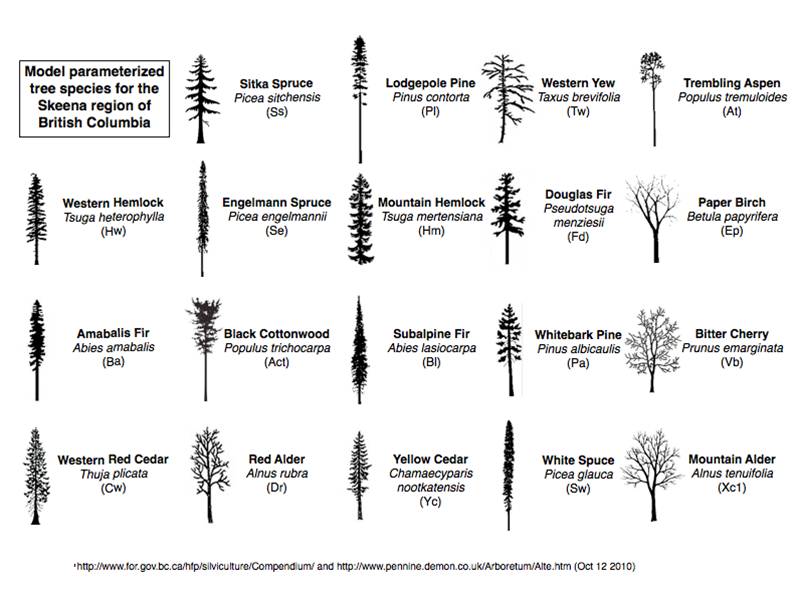The science of climate change is constantly evolving. Predicting how the climate may change, and in turn, how those changes may impact specific regions and ecosystems, is a critical step in adaptation planning. For example, in the forest industry, it is important to understand how different tree species could respond to different climates, in order to plan for the future. This information can then inform management strategies to support adaptation and resilience. An example of one such strategy that is already being used is ‘assisted migration’, where tree seedlings expected to thrive in future Biogeoclimatic Zones (BEC zones) are planted.

Biogeoclimatic Zones for the FFESC study area (a pdf version of this map is available in the library)
For the CCAP project, Dr. Jed Kaplan and Dr. Joe Melton, are using a Dynamic Global Vegetation Model (DGVM) called LPJ-GUESS to show possible shifts in species distribution and growth. The model uses climate scenarios generated for the most recent report of the International Panel on Climate Change (IPCC-AR4). The LPJ-GUESS model has been parameterized for 19 tree species of the Skeena region. Depending on the findings from the sociological research, this model can also be used to illustrate potential impacts to specific values and resources identified by community members.

For more on the LPJ-GUESS Model, check out this link:
This poster was presented at the UBC hosted conference ‘Proactive Adaptation: Challenges and Opportunities for Climate Change Response within Sustainable Forest Management.’ **All results depicted in this poster are preliminary and subject to revisions as the project progresses.